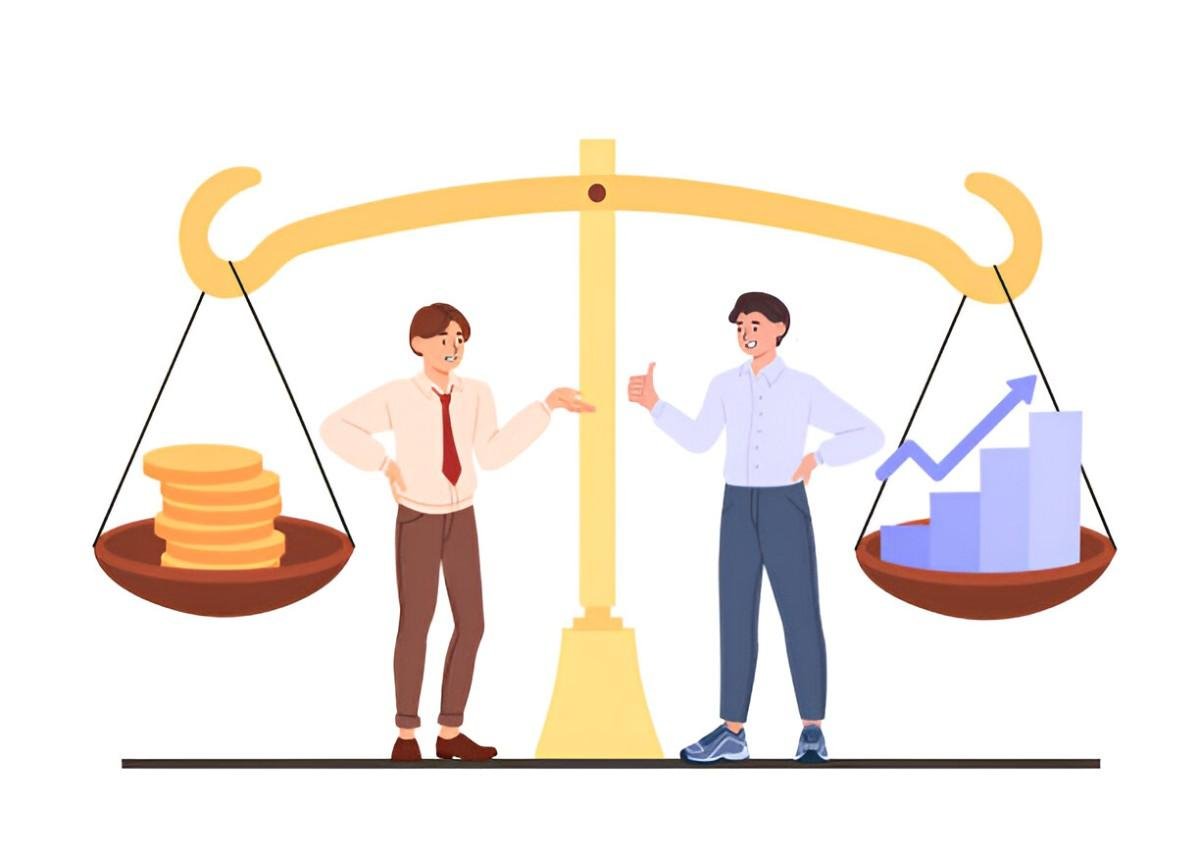I often find that investors focus on a single number. They look at a mutual fund’s advertised performance and make a decision. But this surface-level analysis misses a deeper, more revealing story. In my years of analysis, I have learned that the true measure of a fund family’s value to its investors isn’t found in its best-performing fund. It is found in the difference between two distinct metrics: equal-weighted returns and asset-weighted returns. This distinction is one of the most important, yet least discussed, concepts in fund analysis.
Table of Contents
Defining the Terms: Two Ways to See the World
To understand this, we must first define our terms clearly.
An equal-weighted average treats every fund the same. It calculates the average performance of a group of funds without considering how much money is in each one. Imagine a fund family has two funds: a small technology fund that gained 50% last year and a massive S&P 500 index fund that gained 10%. The equal-weighted average return is simple: (50\% + 10\%) / 2 = 30\%. This number is useful for judging the pure stock-picking or strategy-execution ability of the fund managers across all their products.
An asset-weighted average accounts for the size of each fund. It calculates the average return investors actually experienced, based on where they actually put their money. Using the same example, let’s say the tech fund has \$100 million in assets while the S&P 500 fund has \$20 billion. The asset-weighted return is a dollar-weighted average. The math heavily favors the larger fund:
\frac{(\$0.1B \times 0.50) + (\$20B \times 0.10)}{\$0.1B + \$20B} = \frac{\$0.05B + \$2B}{\$20.1B} = \frac{\$2.05B}{\$20.1B} \approx 0.10199This equals an asset-weighted return of approximately 10.2%.
The difference is staggering. The equal-weighted average suggests spectacular success (30%). The asset-weighted average reveals the typical investor in this fund family earned a much more modest return (~10.2%). This tells a completely different story.
Why the Gap Exists: Investor Behavior is the Key
The divergence between these two numbers is often called the “behavior gap.” It does not measure manager skill; it measures investor intelligence and timing. A large gap typically indicates that investors are making poor timing decisions.
How does this happen? Investors are often driven by emotion. They chase performance. They pour money into funds that have recently had spectacular returns, usually near a market peak. They flee from funds that have recently performed poorly, often selling near a market bottom. This “buy high, sell low” behavior is devastating to real-world returns.
The asset-weighted metric captures this phenomenon. If a fund company shows a high equal-weighted return but a much lower asset-weighted return, it is a clear sign that investors, on average, have poorly timed their investments into and out of those funds.
A Tale of Two Fund Families: A Hypothetical Example
Let’s compare two fictional fund companies, “Steadyhand Investments” and “Momentum Funds LLC,” over a ten-year period.
| Metric | Steadyhand Investments | Momentum Funds LLC |
|---|---|---|
| Number of Funds | 10 | 10 |
| Equal-Weighted Avg. Return | 9.0% | 11.0% |
| Asset-Weighted Avg. Return | 8.8% | 8.5% |
| Performance Gap | -0.2% | -2.5% |
At first glance, Momentum Funds seems superior. Its managers, on average, delivered an 11% return across all funds. But the asset-weighted return tells the true story. The typical investor in Momentum Funds only earned 8.5%. This massive -2.5% gap suggests investors performance-chased, flooding into hot funds at the wrong time and hurting their own results.
Steadyhand Investments, however, shows a different pattern. Its equal-weighted return is a solid but less flashy 9%. Crucially, its asset-weighted return is nearly identical at 8.8%. This tiny gap of -0.2% indicates that investors in Steadyhand’s funds did not try to time the market. They invested their money consistently and held for the long term. They captured nearly all the return their fund managers produced.
As an analyst, I would view Steadyhand as the more successful company. They have effectively aligned their products with investor outcomes. Momentum may have better-performing funds, but their investors failed to benefit from them.
The Deeper Implications for Your Portfolio
This analysis extends beyond judging fund families. It offers crucial lessons for your own investment behavior.
- Beware of Performance Chasing: The single greatest way to destroy your returns is to buy what is hot. The asset-weighted data proves this is exactly what the average investor does. Resist the urge to jump into the top-performing fund of the last year.
- Embrace Boring Consistency: Focus on fund families and strategies known for low costs and consistent, repeatable processes—not explosive, unpredictable gains. Steady compounding in a low-cost index fund often leads to better real-world results than swinging for the fences with volatile funds.
- Use Asset-Weighted Data as a Screen: When researching a fund family, seek out this data. Morningstar and other research firms often publish it. A small gap between asset-weighted and equal-weighted returns is a strong sign of investor-friendly outcomes. A large gap is a major red flag.
My Final Perspective: The Truth in the Weighting
The move from an equal-weighted view to an asset-weighted view is a move from theory to reality. It shifts the focus from abstract manager performance to the actual client experience. It acknowledges that investor behavior is a powerful component of overall returns.
For me, this metric cuts through the marketing hype. A fund company can advertise its top-performing funds all day long. But the asset-weighted return reveals the truth of whether that performance helped or hurt the average person who trusted them with their money. When you choose investments, consider not just what a fund has done, but what the typical investor in that fund has actually earned. That is the number that truly matters for your financial future.





